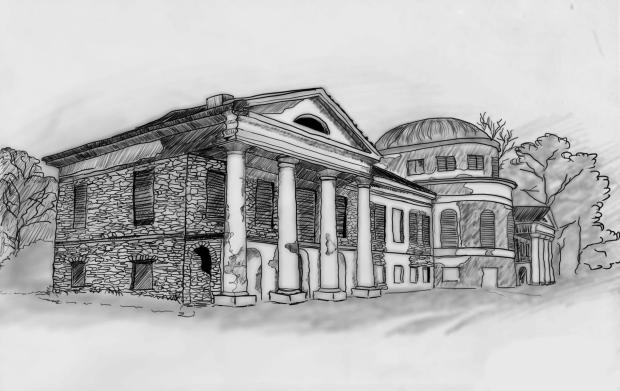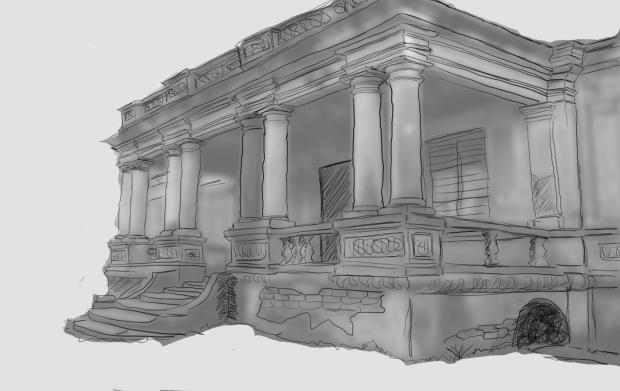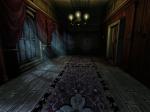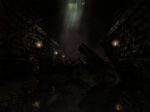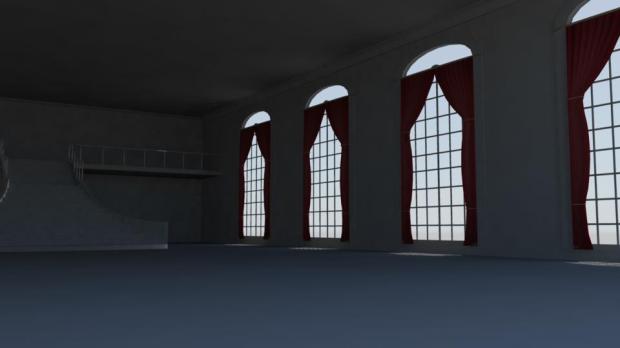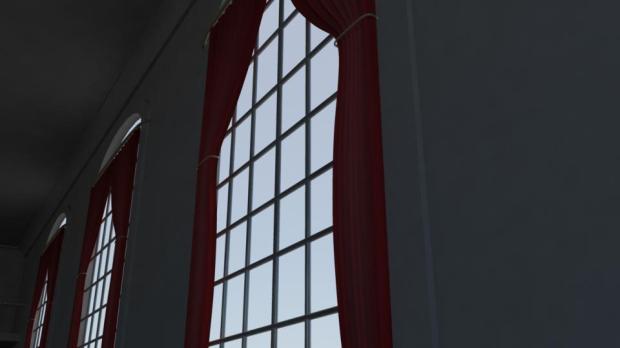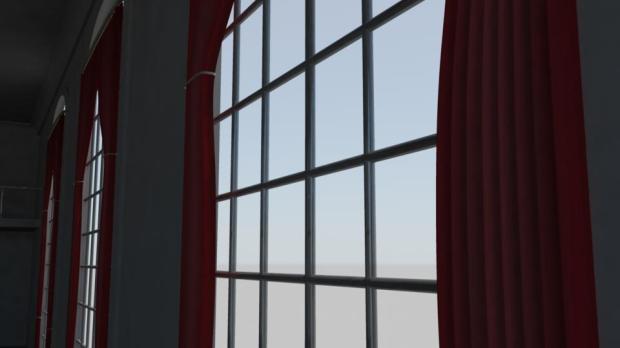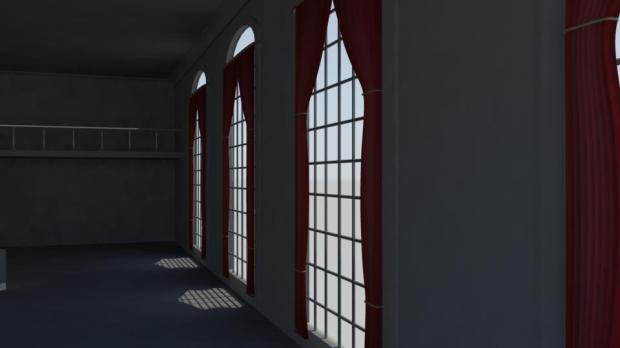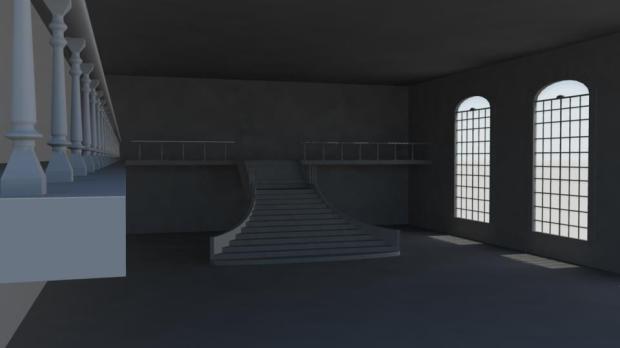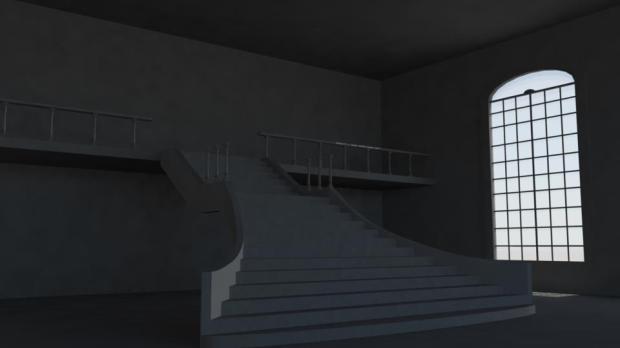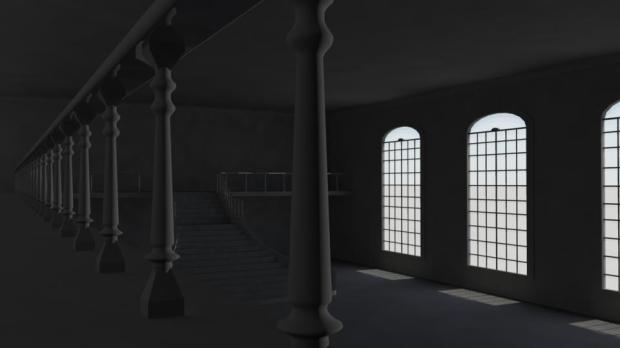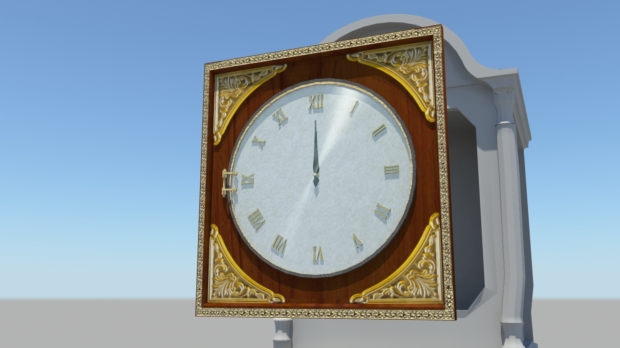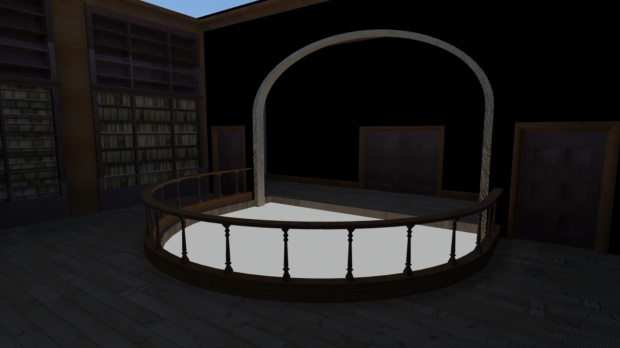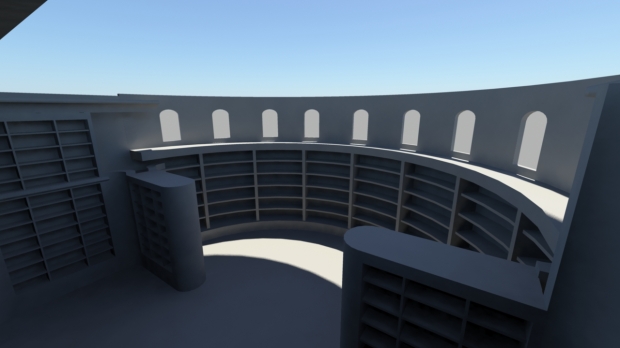The role of Art Director in any visual media is very important. The Art Director is responsible for designing the look and feel of a film (or in this case, game) and conducting relevant research to ensure that all contextual details of the film match the screenplay. Having completed Film Art and Production at the Arts University College at Bournemouth, I had a reasonable amount of experience either as Art Director, or working with very talented Art Directors in my teams. However, unlike in Film, the concept of Auteur Theory (roughly speaking: where the Art Directors vision is the primary driving force behind a film, instead of a collaborative vision of the writer and producer) could not apply here, in an educational group effort where every opinion had to count.
As a consumer, I like old things. Granted, I love sci fi and futuristic visuals as much as the next geek, but for this project I really wanted to instill a sense of old world grandeur, twisted and deformed into a majestic menace. When writing the narrative for the game, the structure remained the same, but the contextual details changed several times until we settled on latter-revolutionary France.
Choosing the correct period in an Historically themed game is essential. Looking at the trend of horror/psychological games, the vast majority of them are set in the victorian era; it’s visuals are distant enough from our own to be interesting, yet the societal values and conventions are similar enough to our own to be relatable – thanks to the work of prolific authors like Charles Dickens, Robert Louis Stevenson and George Elliot, the Victorian period is very well documented, meaning that developers and filmmakers have a rich supply of materiel with which to plunder for inspiration. This has led to countless film and television adaptations, successful for their portrayal and recreation of Victorian life as much as for their writing. Audiences enjoy stories, either in games or in films, that they believe in, and a key part of that is creating an immersive environment.
In the original pitch, the game was set in the Black Forest of southwestern Germany. However, we decided to move it from there owing to the fact that many games, including our inspiration/arch-nemesis “Amnesia: The Dark Descent” were set in dark, mountainous Prussian woodland. In retrospect, the game could have worked very successfully had we set it there, but we were, at the time, perhaps overly concerned with choosing an original location, and so we vetoed the location.
Then we thought of setting it in heartland Russia in the depths of the infamous Russian Winter, but our cultural knowledge of Russia was definitely lacking (you can only learn so much from watching Dr Zhivago and Anna Karenina over and over again). Also, unlike France and Germany, British and American audiences do not such a latent understanding of Russian culture; even out cultural stereotypes are extremely dated, or negative. I still believe the game could have worked extremely well there, and when we get a chance to remake the game, I’d personally love to see a run-down, post-revolution spooky russian mansion…

